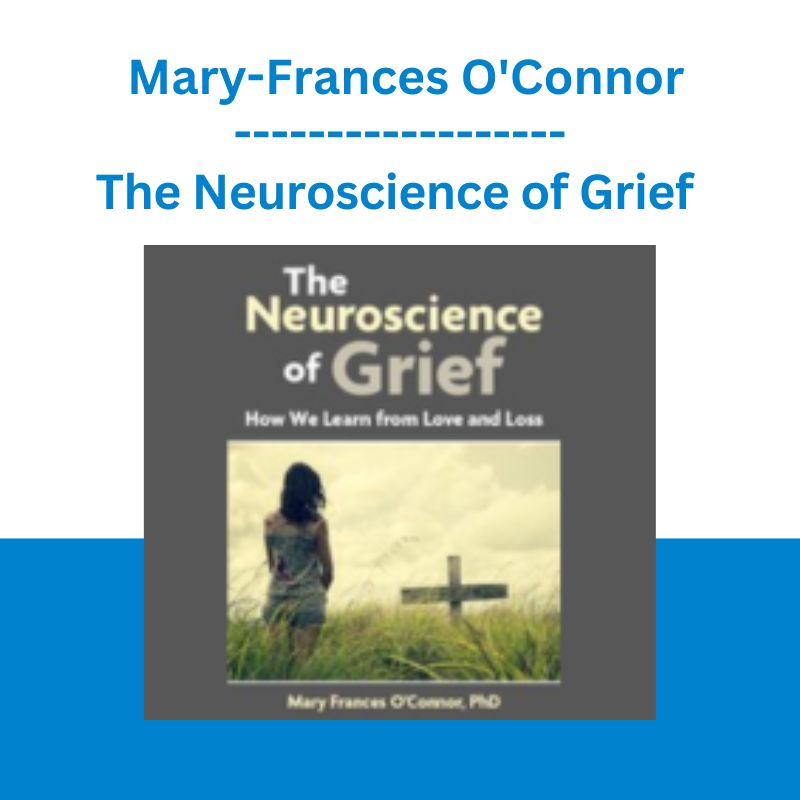*** Proof of Product ***
Exploring the Essential Features of “The Neuroscience of Grief – Mary-Frances O’Connor”
Why does grief hurt so much? Why does death, the permanent absence of a person with whom you are bonded, result in such devastating feelings and lead to behavior and beliefs that are inexplicable, even to the grieving person? Neuroscience and cognitive psychology can provide some answers beyond what grief feels like—tackling the questions of why. Some of the answers to our questions about grief can be found in the brain, the seat of our thoughts and feelings, motivations, and behaviors. By looking at grief from the perspective of the brain, we will discuss the contemporary neuroscience of how bonded relationships are encoded in order to better understand the why of grief. Considering grieving to be a form of learning is helpful to understanding the trajectory of adaptation during bereavement.
Speaker
Mary-Frances O’Connor, PhD
Mary-Frances O’Connor is an associate professor of clinical psychology and psychiatry at the University of Arizona. Her research focuses on the physiological correlates of emotion, in particular the wide range of physical and emotional responses during bereavement, including yearning and isolation. She believes that a clinical science approach toward the experience and mechanisms of grieving can improve interventions for prolonged grief disorder, newly included in the revised DSM-5.
Speaker Disclosures:
Financial: Mary-Frances O’Connor has an employment relationship with the University of Arizona and receives royalties as a published author. She receives a speaking honorarium from PESI, Inc. She has no relevant financial relationships with ineligible organizations.
Non-financial: Mary-Frances O’Connor has no relevant non-financial relationships.
Objectives
- Describe how the neurobiological attachment system encodes close relationships and the separation response to loss.
- Compare separation in pair-bonded animals to the neurobiological effects of acute grief in humans.
- Explain how rumination and avoidance can interfere with the grieving process, preventing learning how to restore a meaningful life.
Outline
Neurobiology of grief and grieving
- Neurobiology of attachment in humans and pair-bonded animals
- The difference between grief and grieving
- The Gone But Also Everlasting theory
- Risks and Limitations
Prolonged Grief Disorder (PGD)
- Debunking the myth of the 5 stages of grief
- Empirical data on the grieving trajectories
Grieving as a form of learning
- Complications for learning are also complications for grieving
Toolkit of coping strategies and psychotherapeutic intervention
- Emotion regulation flexibility, the right strategy for the right moment
- Avoidance
- Rumination
Target Audience
- Psychiatrists
- Psychologists
- Counselors
- Social Workers
- Marriage and Family Therapists
- Nurses
- Physicians
- Other Mental Health Professionals
Please see the full list of alternative group-buy courses available here: https://lunacourse.com/shop/










 Racing Workshop - Complete Online Package
Racing Workshop - Complete Online Package  Oliver Velez - Essential Strategy Of Trade For Life
Oliver Velez - Essential Strategy Of Trade For Life  George Fontanills & Tom Gentile - Optionetics Wealth Without Worry Course
George Fontanills & Tom Gentile - Optionetics Wealth Without Worry Course  Julie Stoian & Cathy Olson - Launch Gorgeous - Funnel Gorgeous Bundle
Julie Stoian & Cathy Olson - Launch Gorgeous - Funnel Gorgeous Bundle  Trade Like Mike - The TLM Playbook 2022
Trade Like Mike - The TLM Playbook 2022